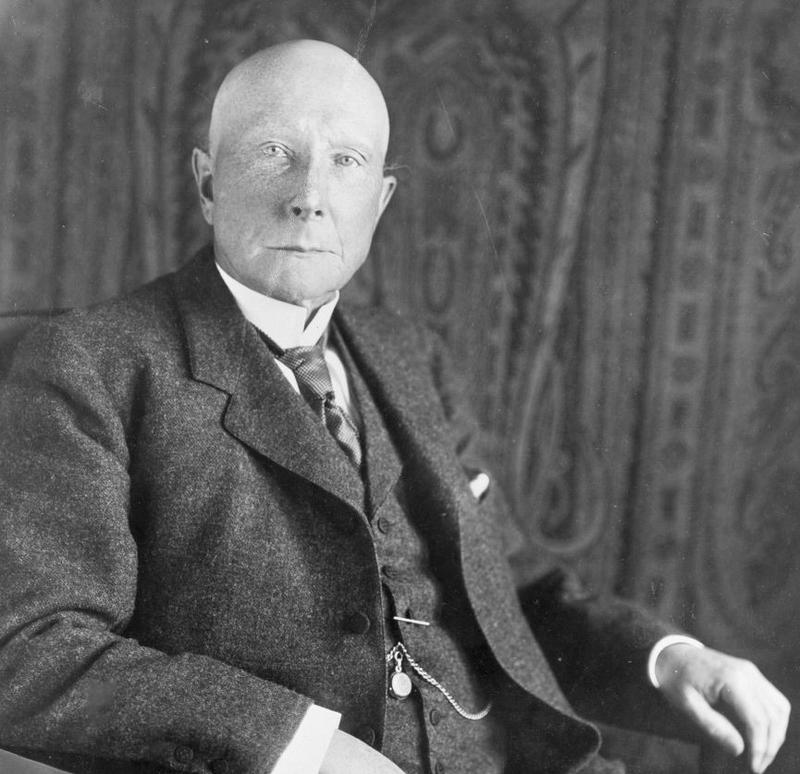John D. Rockefeller: The First Billionaire's Biography (And Things You Didn't Know)
By | September 24, 2020

America's first billionaire, John D. Rockefeller, was either a Victorian villain or the epitome of the self-made man, depending on who you ask. Today, the original oil tycoon's name is synonymous with wealth and luxury, but there was much more to Rockefeller than cartoonish top hats and canes.
Rockefeller's Early Life
Whatever faults Rockefeller had, he almost certainly learned them from his father. William Avery Rockefeller was a travelling snake oil salesman who often pretended to be deaf and mute and then miraculously cured by the folk medicine he was selling. He also posed as an eye and ear specialist named Dr. William Levingston and even married another woman under the pseudonym while still married to his first wife. This was only one of many affairs William Rockefeller undertook, including one with his family's live-in housekeeper and nanny that resulted in a daughter. Not exactly a role model.
If little John learned anything from his father, it was certainly the entrepreneurial spirit. At the age of 14, when his family moved to Ohio, he immediately launched several small businesses to make his own money. He earned a reputation as a hard worker, and at just 16, he took a bookkeeping job with a company called Hewitt & Tuttle that shipped produce and other goods on commission and gave Rockefeller his first real taste of the business world. He regarded it as such a pivotal event in his life that he celebrated the anniversary of landing that job every September 26. Four years later, he formed a commission merchant business that sold grain, meats, hay, produce, and more. The company was so successful that it grossed more than $400,000 in its first year in business.

How To Get Rich While Trying A Lot
In the early 1860s, western Pennsylvania saw a surge in oil production, inspiring Rockefeller to build a refinery on Ohio, near the Pennsylvania state line and the city of Pittsburgh. In less than two years, it was the largest refinery in the region and so profitable that Rockefeller abandoned his other businesses to focus full-time on building Standard Oil.
How did he achieve so much more success than his competitors? Well, here's a fun little story about John D. Rockefeller: He was a lifelong abolitionist, but when the time came to do his duty and fight the Confederates, he hired young men to take his place on the battlefield. It wasn't an uncommon practice among the well-to-do in the North, and it might not even have been fueled by cowardice: He later insisted that his business would have gone belly-up if he'd left to fight a war, which probably wouldn't have earned him much sympathy from the men whose bodies had gone belly-up so he could enjoy the fruits of their battle. Incidentally, Rockefeller's business greatly profited from the war, earning him enough money to start his oil business.
Basically, Rockefeller wasn't above throwing his money and influence around to get himself a better deal than the little guy could ever dream of securing. Sure, he figured out how to profit from recycling Standard Oil's waste material instead of dumping the sludge into nearby rivers, but he also used his clout to cut special deals on his shipping costs and intimidate his competitors into selling out until he owned more than 90% of the oil refineries in the U.S.
He went a little nuts there, buying up all the pipelines, terminals, land, forests, and anything else related to the oil industry that he could get his hands on, and soon, Rockefeller had nearly every aspect of the oil business under his control. He had created America's first monopoly, and America quickly decided it didn't like those. In 1911, after years of court hearings, the U.S. Supreme Court ruled that his company was in violation of antitrust laws and had to be dismantled.
Standard Oil was split into 34 different companies, many of which—such as Exxon Mobil, Chevron, and Amoco—are still household names today, but even the Supreme Court couldn't put the brakes on the Rockefeller train. It turned out that the individual companies were worth more separated than they were together. Within two years of the breakup of Standard Oil, Rockefeller officially became America's first billionaire, with a net worth equal to 2% of the entire American economy.

Not A Monster
At some point, a billionaire simply has too much money and needs to give some of it away. Throughout Rockefeller's life, he tithed 10% of his earnings to his church and donated prolifically to educational institutions, various social causes, and research organizations. Though his own post-secondary experience was limited to a 10-week course in business and bookkeeping, his money kick-started the University of Chicago and Rockefeller University. He established his Rockefeller Foundation to "promote the well-being of mankind throughout the world," and it's hard to say he didn't succeed. The Rockefeller Foundation was instrumental in developing the vaccine for yellow fever and eradicating hookworm in the U.S.
In all, Rockefeller spent roughly half a billion dollars on philanthropy, but even long after his retirement, the money simply would not stop flowing in. In fact, when he outlived his life insurance policy at age 96, the insurance company had to pay him $5 million, the face value of the policy. He passed away on May 23, 1937, less than a year later. John D. Rockefeller always got his investment back.

